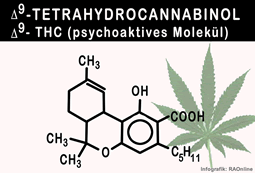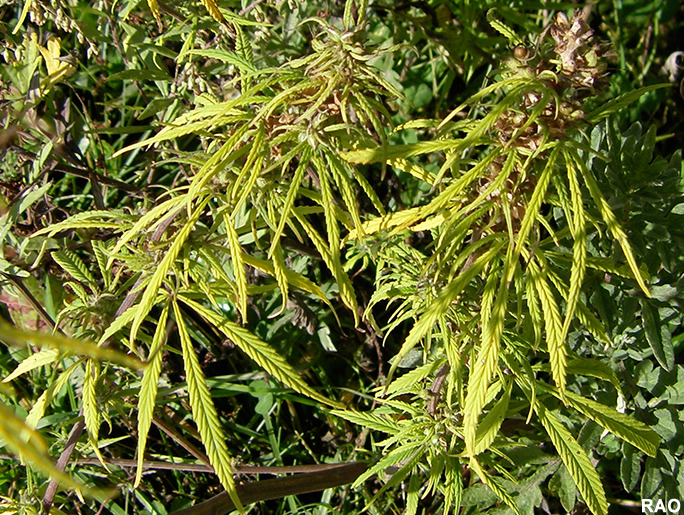
|
|
|
 |
 |
|
|
| Drogen und Sucht: Berichte |
 |
 |
 |
 |
| UNODC: Weltdrogenbericht 2022 |
Weltweit steigende Drogenproduktion und zunehmender Drogenkonsum
Das United Nations Office on Drugs and Crime UNODC (UN Büro für Drogen und Verbrechen) hat in seinem World Drug Report 2022 (Weltdrogenbericht 2022) einige aktuelle Trends beim Konsum von illegalen Drogen aufgezeigt.
 |
Das UNODC stellt grundsätzlich weltweit eine Zunahme der Drogenproduktion und des Drogenkonsums fest. Die Herstellung von Kokain und von synthetischen Drogen ist im Steigen begriffen. Die Drogenhändler erschliessen sich immer neue Märkte. Der Konsum von Cannabisprodukten (Haschisch und Marihuana) fördert nach wie vor den Einstieg in den Bereich von härteren Drogen. |
Ein wichtiger Grund für diese Zunahmen sieht das UNODC die Legalisierung von Cannabisprodukten in zahlreichen Region der Welt.
Die Legalisierung von Cannabis in Nordamerika bewirkte offensichtlich vor allem bei jungen Erwachsenen eine steigende Nachfrage nach häufig auch nach Cannabisprodukten mit stärkere Wirkung. Der steigende Konsum wird begleitet von einer Zunahme von psychischen Störungen, Selbstmordversuchen und Spitaleinweisungen unter den Konsumentinnen und Konsumenten von Cannabis. DieLegalisierung führte zu höheren staatlichen Steuereinnahmen und zu einer Verminderung der Gefängniszuweisungen im Zusammenhang mit einem Cannabisbesitz.
284 Millionen Menschen im Alter zwischen 15 und 64 konsumieren 2020 weltweit Drogen. Diese Zahl ist um 26% höher als jene der Drogenkonsument/innen im vorangehenden Jahrzehnt. Die Autor/innen des Berichts schätzen, dass weltweit rund 11,2 Millionen Menschen Drogen injizieren. Die Hälfte dieser Menschen sind mit Hepatitis C infizierte, 1,4 Millionen mit HIV und ungefähr 1,2 Millionen mit beiden Krankheiten.
Frauen sind als Drogenkonsumentinnen weiterhin in der Minderheit. Allerdings wächst ihre Anzahl stärker als jene der männlichen Konsumenten. Schätzungsweise 45-49% des Konsums von Amphetaminen, pharmazeutischen Stimulanzien, Schmerzmittel auf Opioidbasis, Sedative oder Hypnotika sowie Beruhigungsmitteln sind Frauen.
Frauen nehmen seltener Hilfe im Kampf gegen ihr Suchtverhalten an als Männer. Obwohl die Frauen beim Amphetaminkonsum fast einen Anteil von 50% haben, beanspruchen nur rund 20% eine Behandlungen gegen ihre Suchtverhalten.
Eine grosse Menge von illegalen Amphetaminen wird in der Ukraine hergestellt. 2019 wurden in der Ukraine 17 illegale Produktionsstätten entdeckt und ausgehoben. 2020 waren es bereits 79 Drogenlaboratorien. Die Anzahl der entdeckten Labore mit einer Amphetaminproduktion hat sich in gleichen Zeitraum fast verzwölffacht. Nirgendwo auf der Welt wurde 2020 so viele illegale Amphetamine hergestellt wie in der Ukraine.
Die Produktion und der Handel mit Drogen ist eine weltweit wachsendes Geschäft. Die Produktion von Kokain war 2020 mit 1'982 Tonnen (11% mehr als 2029) auf einem Rekordhoch. Das meiste Kokain gelangte in Seecontainer in die Hauptabnehmerregionen Nordamerika und Europa. Zunehmend beliefern die Drogensyndikate auch Asien und Afrika.
In 117 Ländern wurden Ladungen von Methamphetaminen beschlagnahmt. Amphetamine und Methamphetamine sind unter dem Namen "Speed" bekannt. Die Menge der konfiszierten Methamphetaminen hat sich von 2010 bis 2020 verfünffacht.
Die Produktion von Opium stieg zwischen 2020 und 2021 um rund 7% auf 7'930 Tonnen. Einer weltweiten Abnahme der Mohnanbauflächen steht eine starke Ausweitung der Produktion in Afghanistan entgegen.
| Text: RAOnline, Quelle: UNODC, 27. Juni 2022 |
 |
| UNODC World Drug Report 2022 |
UNODC World Drug Report 2022 highlights trends on cannabis post-legalization, environmental impacts of illicit drugs, and drug use among women and youth
 |
|
According to the report, around 284 million people aged 15-64 used drugs worldwide in 2020, a 26 per cent increase over the previous decade. Young people are using more drugs, with use levels today in many countries higher than with the previous generation. In Africa and Latin America, people under 35 represent the majority of people being treated for drug use disorders.
Globally, the report estimates that 11.2 million people worldwide were injecting drugs. Around half of this number were living with hepatitis C, 1.4 million were living with HIV, and 1.2 million were living with both.
Reacting to these findings, UNODC Executive Director Ghada Waly stated: "Numbers for the manufacturing and seizures of many illicit drugs are hitting record highs, even as global emergencies are deepening vulnerabilities. At the same time, misperceptions regarding the magnitude of the problem and the associated harms are depriving people of care and treatment and driving young people towards harmful behaviours. We need to devote the necessary resources and attention to addressing every aspect of the world drug problem, including the provision of evidence-based care to all who need it, and we need to improve the knowledge base on how illicit drugs relate to other urgent challenges, such as conflicts and environmental degradation."
The report further emphasizes the importance of galvanizing the international community, governments, civil society and all stakeholders to take urgent action to protect people, including by strengthening drug use prevention and treatment and by tackling illicit drug supply.
Early indications and effects of cannabis legalization
Cannabis legalization in North America appears to have increased daily cannabis use, especially potent cannabis products and particularly among young adults. Associated increases in people with psychiatric disorders, suicides and hospitalizations have also been reported. Legalization has also increased tax revenues and generally reduced arrest rates for cannabis possession.
Continued growth in drug production and trafficking
Cocaine manufacture was at a record high in 2020, growing 11 per cent from 2019 to 1,982 tons. Cocaine seizures also increased, despite the Covid-19 pandemic, to a record 1,424 tons in 2020. Nearly 90 per cent of cocaine seized globally in 2021 was trafficked in containers and/or by sea. Seizure data suggest that cocaine trafficking is expanding to other regions outside the main markets of North America and Europe, with increased levels of trafficking to Africa and Asia.
Trafficking of methamphetamine continues to expand geographically, with 117 countries reporting seizures of methamphetamine in 2016-2020 versus 84 in 2006-2010. Meanwhile, the quantities of methamphetamine seized grew five-fold between 2010 and 2020.
Opium production worldwide grew seven per cent between 2020 and 2021 to 7,930tons - predominantly dueto an increase in production in Afghanistan. However, the global area under opium poppy cultivation fell by 16 per cent to 246,800 ha in the same period.
Key drug trends broken down by region
In many countries in Africa and South and Central America, the largest proportion of people in treatment for drug use disorders are there primarily for cannabis use disorders. In Eastern and South-Eastern Europe and in Central Asia, people are most often in treatment for opioid use disorders.
In the United States and Canada, overdose deaths, predominantly driven by an epidemic of the non-medical use of fentanyl, continue to break records. Preliminary estimates in the United States point to more than 107,000 drug overdose deaths in 2021, up from nearly 92,000 in 2020.
In the two largest markets for methamphetamine, seizures have been increasing - they rose by seven per cent in North America from the previous year, while in South-East Asia they increased by 30 per cent from the previous year, record highs in both regions. A record high was also reported for methamphetamine seizures reported from South-West Asia, increasing by 50 per cent in 2020 from 2019.
Great inequality remains in the availability of pharmaceutical opioids for medical consumption. In 2020, there were 7,500 more doses per 1 million inhabitants of controlled pain medication in North America than in West and Central Africa.
Conflict zones as magnets for synthetic drug production
This year's report also highlights that illicit drug economies can flourish in situations of conflict and where the rule of law is weak, and in turn can prolong or fuel conflict.
Information from the Middle East and South-East Asia suggest that conflict situations can act as a magnet for the manufacture of synthetic drugs, which can be produced anywhere. This effect may be greater when the conflict area is close to large consumer markets.
Historically, parties to conflict have used drugs to finance conflict and generate income. The 2022 World Drug Report also reveals that conflicts may also disrupt and shift drug trafficking routes, as has happened in the Balkans and more recently in Ukraine.
A possible growing capacity to manufacture amphetamine in Ukraine if the conflict persists
There was a significant increase in the number of reported clandestine laboratories in Ukraine, skyrocketing from 17 dismantled laboratories in 2019 to 79 in 2020. 67 out of these laboratories were producing amphetamines, up from five in 2019 - the highest number of dismantled laboratories reported in any given country in 2020.
The environmental impacts of drug markets
Illicit drug markets, according to the 2022 World Drug Report, can have local, community or individual-level impacts on the environment. Key findings include that the carbon footprint of indoor cannabis is between 16 and 100 times more than outdoor cannabis on average and that the footprint of 1 kilogram of cocaine is 30 times greater than that of cocoa beans.
Other environmental impacts include substantial deforestation associated with illicit cocoa cultivation, waste generated during synthetic drug manufacture that can be 5-30 times the volume of the end product, and the dumping of waste which can affecting soil, water and air directly, as well as organisms, animals and the food chain indirectly.
Ongoing gender treatment gap and disparities in drug use and treatment
Women remain in the minority of drug users globally yet tend to increase their rate of drug consumption and progress to drug use disorders more rapidly than men do. Women now represent an estimated 45-49 per cent of users of amphetamines and non-medical users of pharmaceutical stimulants, pharmaceutical opioids, sedatives, and tranquilizers.
The treatment gap remains large for women globally. Although women represent almost one in two amphetamines users, they constitute only one in five people in treatment for amphetamine use disorders.
The World Drug Report 2022 also spotlights the wide range of roles fulfilled by women in the global cocaine economy, including cultivating coca, transporting small quantities of drugs, selling to consumers, and smuggling into prisons.The 2022 World Drug Report provides a global overview of the supply and demand of opiates, cocaine, cannabis, amphetamine-type stimulants and new psychoactive substances (NPS), as well as their impact on health.
| Source: UNODC, 27 June 2022 |
 |
| Weitere Informationen |
|
| Links |
| Externe Links |
|
|
|
 |
|
|
|
|
|